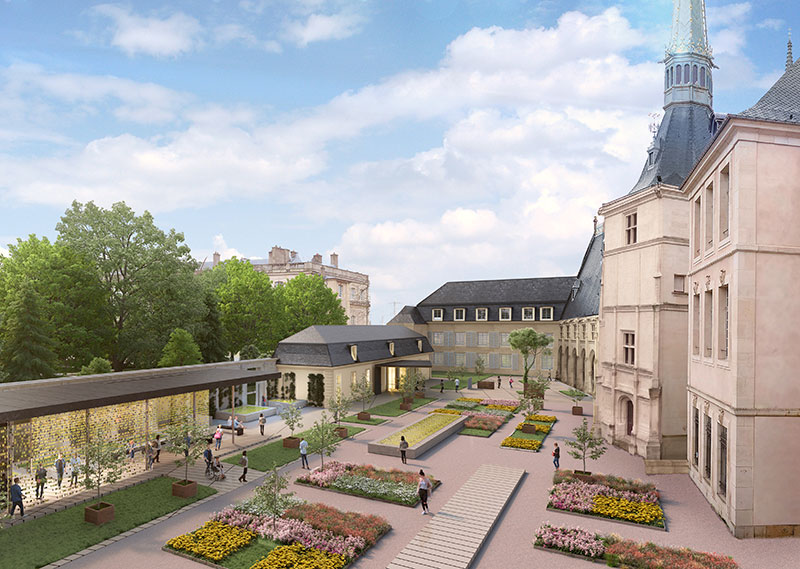It has now been more than ten years since the project to extend the Lorraine Museum in Nancy has encountered opposition from heritage defenders. However, the path seemed to have recently cleared: the fourth call for tenders, launched in June 2023, proved successful and the Association for the Heritage and Radiation of Nancy, one of the main opponents, announced in January that it would not no longer make appeals and validate the new version of the project. This was without taking into account two other associations, each of which has just filed an appeal with the mayor of Nancy and the prefect of the Region against the work authorization and the building permit. The first appeal was initiated by the Defense and Future of Nancy Heritage association, while the second was carried out almost at the same time by the national Sites & Monuments association.
If the associations do not question the merits of this extension project, they do however criticize its content. When he unveiled the latest version of the project in 2021, the new mayor Mathieu Klein described it as “more sober, more peaceful” but for the Defense and Future of Nancy Heritage association, this version is in reality not really different from the previous one.
The conflict crystallizes around the so-called “back of the courtyard” buildings, located opposite the Ducal Palace (the main building of the museum): an 18th century stable and a former 19th century gendarmerie, both leaning against the Baligand wall, built by the Duke’s engineer Stanislas Leszczynski in the mid-18th century. This involves constructing a new thirty-five meter long screen-printed glass building on this location. To do this, the municipality plans to completely raze the old gendarmerie and deconstruct and then reassemble the Baligand wall and the small stable, which will then be equipped with an entrance hall and screen-printed glass windows. These buildings are nevertheless classified as historic monuments, but the revisions of the Safeguarding and Development Plan (PSMV) of the site – carried out by the municipality in 2019 then in 2022 – have reduced their protection.
For heritage defenders, the project still violates PSMV regulations. The revised Plan authorizes new constructions provided that they harmonize with those already existing, but the glass gallery does not meet this criterion. “Whether it is the cover, the color, the rhythm of the volumes, the scale, the ornamentation, there is nothing that harmonizes with the historic urban fabric”declares Christian Raczkevi, president of the Defense and Future of Nancy Heritage association, in the Republican East.
The associations are also concerned about the extent of the work planned underground. If the latest version abandons the underground amphitheater project, it is still planned to dig under the garden to create new spaces intended to accommodate temporary exhibitions and educational workshops, at the risk of affecting the foundations of the Ducal Palace.
They are also alarmed by the cost of the project, which increased from 43 million euros in 2021 to 56.5 million euros. Such a financial investment is made to the detriment of other heritage operations, such as the imperative restoration of the Carrière hemicycle.
To reduce the budget and prevent the site from deterioration, the Defense and Future of Nancy Heritage association recommends abandoning the glass building project to concentrate on the existing buildings and create an aesthetically more harmonious whole, in particular by transforming the Adjoining Government Palace in museum space. The 18th century building – which had already hosted two exhibitions – would thus still be accessible to the public, while today there are plans to install a private luxury restaurant there. This solution would also allow an early reopening of the museum, which is currently set for 2029. “Staggering the work over several phases would be a much better option, since it would allow the museum to be partially opened to the public” adds Henri Vallas, member of the association interviewed by The Arts Journal. “This is all the more possible since the collections of the Lorraine Museum are in some way divided into two sections, one being devoted to the history of Lorraine and the other, exhibited in the former Cordeliers convent, dedicated to popular arts and traditions ».
If the appeals filed are for the moment gracious, the Defense and Future of Nancy Heritage association indicates that it is ready to defend its arguments before the administrative court if its appeals are not taken into account.







